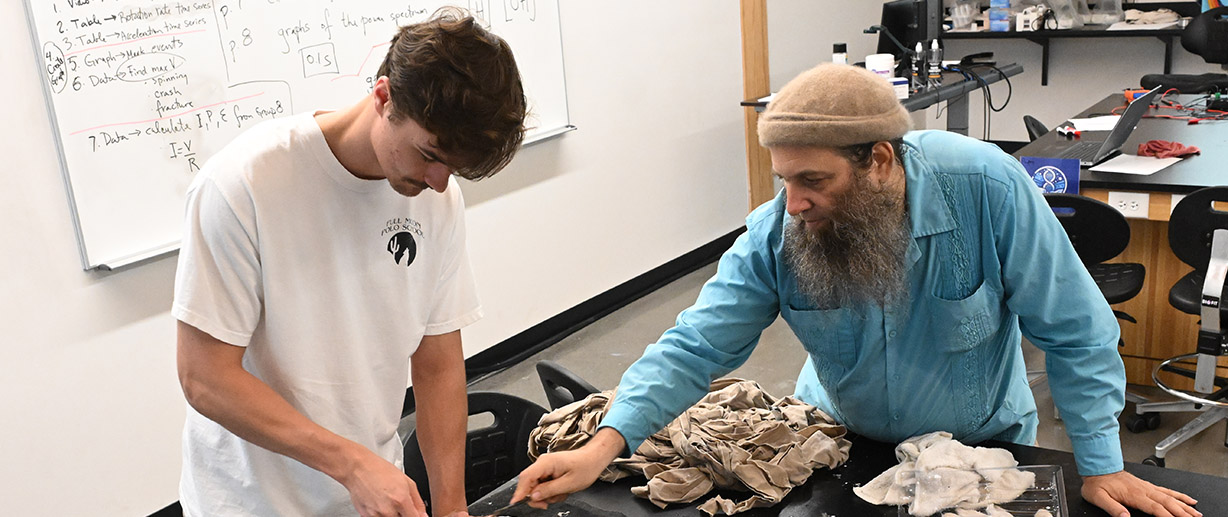When Ellis Parsons ’26 pursued research opportunities this summer, he opted for an experience that would take him out of his comfort zone.
Parsons, an international affairs and history double major from Landrum, South Carolina, chose to work with Dr. Daniel Helman, visiting assistant professor of environmental studies, on a study that could illuminate the beginnings of life on earth.
“It’s outside of my field a little, but I think that is what attracted me to it,” Parsons says. “I was interested in gaining experience in research and challenging myself to go beyond my abilities.”
The study, “New Life for an Icy Worlds Hypothesis of the Origin of Life on Earth” focuses on the interactions between ice and rock during the “Snowball Earth” period.
The research aims to quantify the energy that could have been available from the interactions between ice and phosphorous-rich rocks, driven by tidal forces from the moon when it was much closer to Earth. Helman says this electricity could have been used by early autocatalytic systems to initiate abiogenesis, the natural process by which life arises from non-living matter.
Joining Parsons and Helman are Graham Segars ’25, an environmental studies major from Gilbert, South Carolina, and Truman Sebanc, a rising senior from the South Carolina Governor’s School for Science and Mathematics.
The team spent the first part of summer using different salts and rotational acceleration via a turntable propelled by monofilament line to simulate the deformation of ice, with graphite electrodes and a digital multimeter collecting voltage readings.
Working from the Chandler Center for Environmental Studies, the students helped design the experimental methods, and now create ice blocks for the experiments, set up equipment, record video and contribute to other aspects of the project.
“Because research is collaborative, you end up with wonderful new ideas,” Helman says. “I try to step back because it is not about me. It is about everyone contributing and developing themselves as scientists.”
Helman says the team is moving to the analysis phase, where they will examine video to calculate rotational velocity and acceleration, then match these to the voltage data. They aim to quantify the energy present in an icy environment on Earth billions of years ago, noting the role of ice in life’s origins. The team is well along with a paper on their findings.
“We have good enough data to publish a good paper,” Helman says. “This is great experience for them to add to their resume.”
Segars, who is interested in graphic design and artificial intelligence, has already created a logo for the project and will use his talents to develop charts and graphs, among other contributions.
Parsons, a student archivist in the Sandor Tezler Library, will continue with video analysis and help identify patterns and trends in the data.
“Working as a team to do research has been a great experience,” he says. “A lot of it is just us putting our heads together and trying to find the best solution.”
Parsons says the student-researchers have benefitted from Helman’s guidance.
“Dr. Helman has been great to work with,” he says. “He is incredibly intelligent, so it has been really helpful to have him lead the team. He is also really funny, so it has been a lot of fun working with him.”
